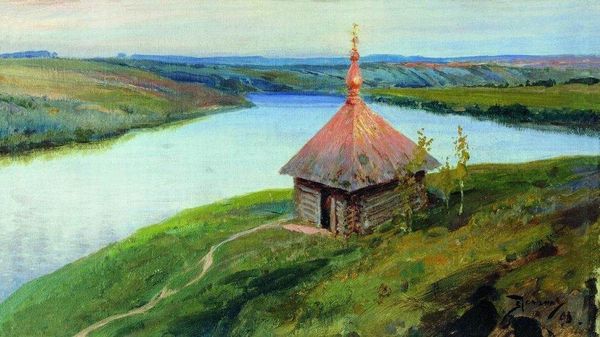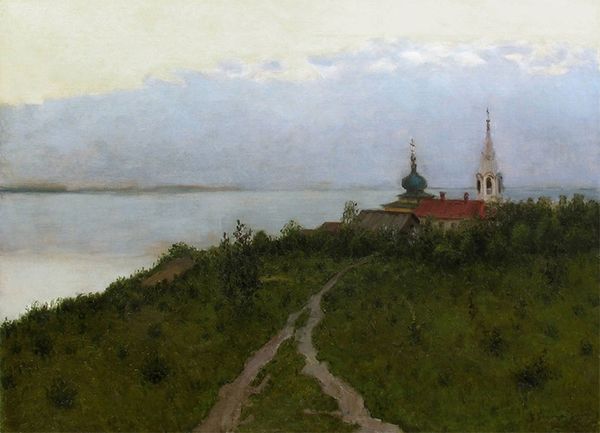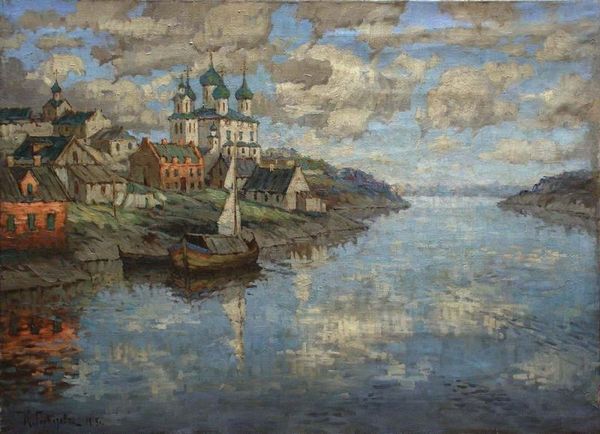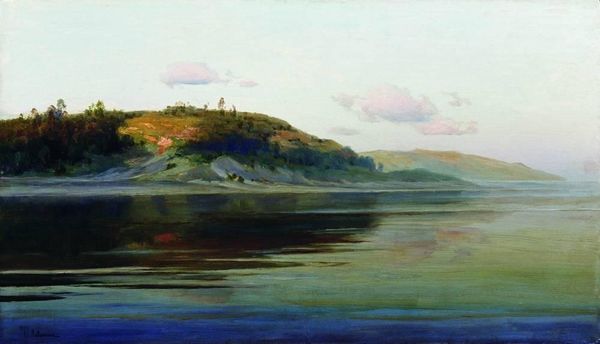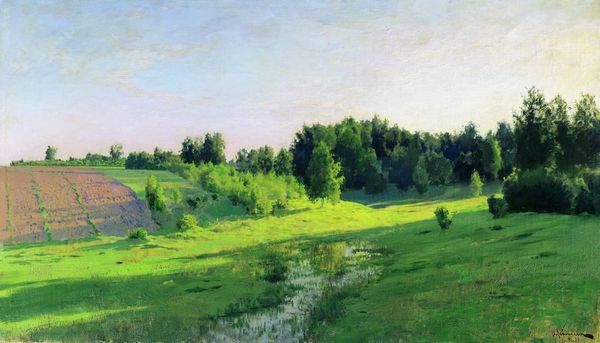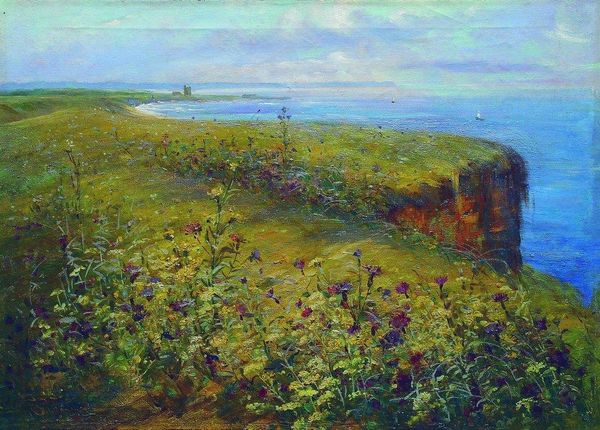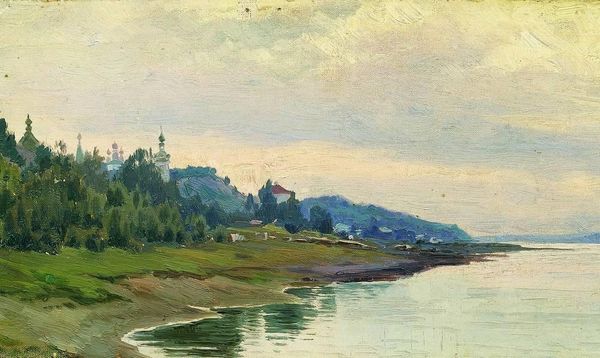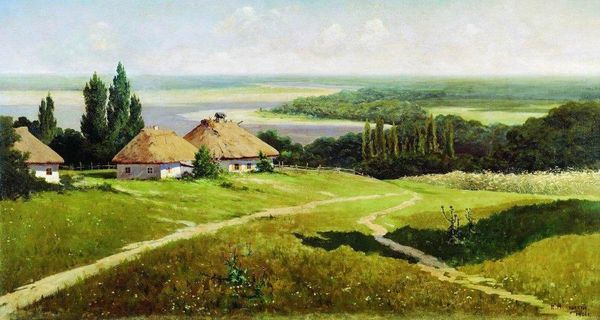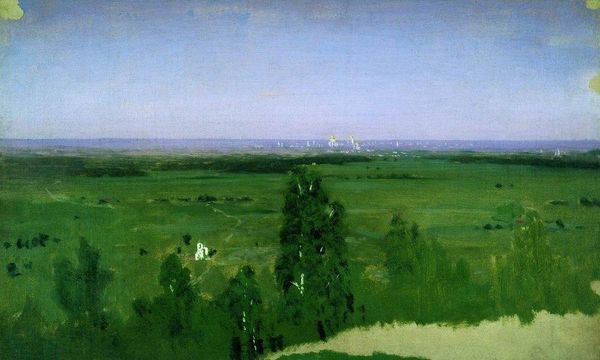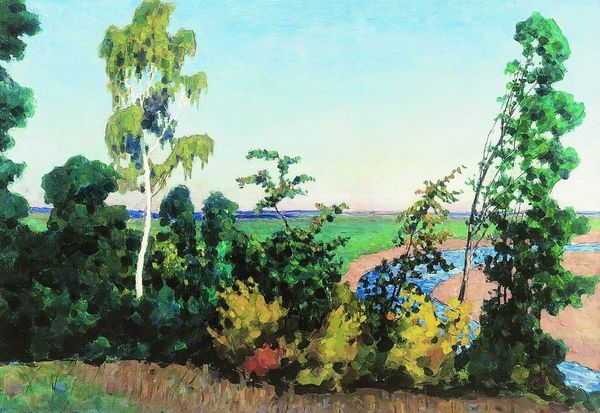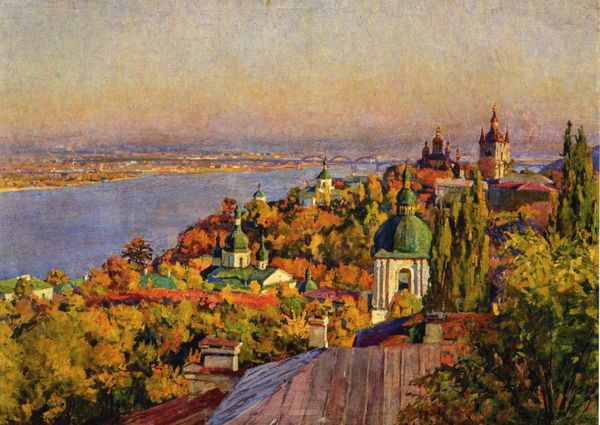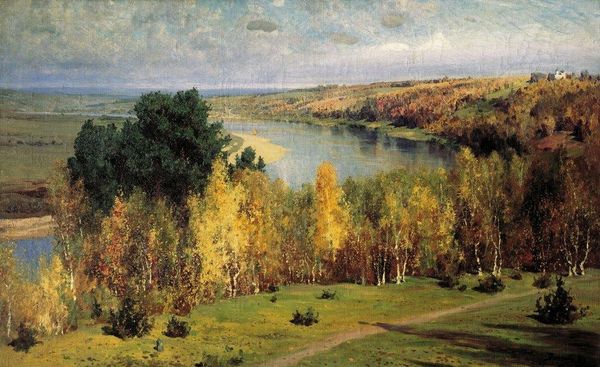
Copyright: Public domain
Curator: Looking at Vasily Polenov's "Monastery over the River," painted in 1898, I’m struck by its peaceful quality. The brushstrokes create a sense of hazy atmosphere. Editor: It feels like a glimpse into a bygone era. The loose brushwork is very interesting to me; you can see the artist's hand so clearly, the very physicality of applying the oil paint to the canvas. Were these paints readily available at this point in history? Were they factory made, or paints made by hand, specifically for Polenov's workshop, do we know? Curator: I believe by the late 19th century, commercially produced oil paints were common. And thinking about it, the availability and consistency of such materials would definitely have influenced the artistic production and dissemination of artworks across different geographies. It changed artistic labour in the same stroke, no longer were artist having to formulate colors and focus solely on creating artwork. Editor: Right, a vital part of production shifts! Considering the title and dominant architecture here, I’m also interested in what role religious institutions played in Russian society at the time. How did their patronage affect artistic choices? The choice of such an idyllic landscape with a monastic center clearly invokes specific values. Curator: Monasteries, then as now, were important social and cultural hubs, acting as patrons of the arts but also shaping public opinion. Presenting them this way in landscape reinforces ideas of stability, tradition, and perhaps even a connection to an idealised past. There is always social meaning at play when these monuments of power become aestheticised. Editor: And of course, this connects directly with questions around land ownership and who controls these beautiful environments we see here. Was Polenov's depiction intended as a straightforward celebration, or could it be read with a bit more criticality considering the prevailing social and political climate? Curator: That's certainly something to keep in mind. It really makes you wonder about the audiences, galleries, exhibition venues this piece was made for, as well as their historical reception within political events like the Russian revolution shortly following. The play of light is gorgeous but seeing through a materialist lens it seems more poignant once you factor in power, process and resources that shaped it. Editor: Absolutely. And with a historian's hat on, analyzing public reception offers further critical tools and points of enquiry. Curator: It does broaden the view considerably; each new material detail expands the artwork's rich narrative!
Comments
No comments
Be the first to comment and join the conversation on the ultimate creative platform.
